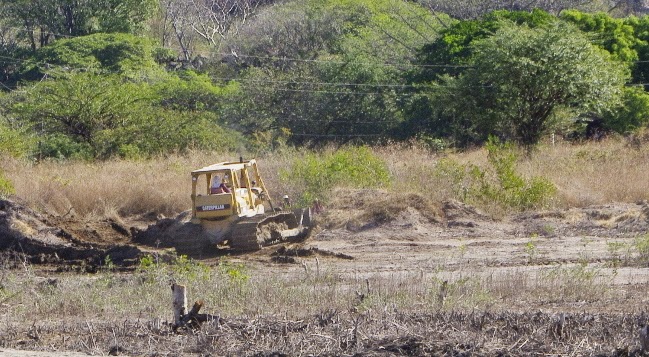Letter to RAMSAR regarding Site #1000
Dear Friends at Ramsar,
I write to you today because I am quite concerned about the fate of
Ramsar’s number 1,000 site in the Gulf of Fonseca in Honduras. I have
just returned from helping implement a training workshop in the San
Lorenzo area where we had intended to rehabilitate an abandoned,
illicitly sited shrimp farm located within the Ramsar site. It had been
abandoned for over a decade, and mangroves had already started to return
to the site, so we had hoped to help the natural restoration along via
our Community-Based Ecological Mangrove Restoration (CBEMR) approach.
We had given prior notice to the government of Honduras that we wished to
use this site in our training workshop, asking for permission to restore
an obviously disused shrimp farm, abandoned and non-productive. We listed
the site location and mentioned it was part of the Ramsar site. We also
gave the dates of our workshop, and thus gave plenty of advance notice of
our plans.
When we arrived there at the site to look it over, we were stunned to see
the bulldozer at work restoring instead the former two shrimp ponds,
removing the mangrove vegetation once again. This was like a cold slap in
the face of our stated intentions, but more so, it was a slap in the face
of Ramsar by the government of Honduras, once again totally ignoring its
stated commitment to the area as a Rasmsar site.

wrongly told that the site had no mangroves present, but we have photos
documenting that the site’s mangroves were being bulldozed while we
visited the site last week. The government’s claims are thus refuted by
our personal visit and the photos we took while there.
Needless to say, we had to find another site that was suitable to apply
the CBEMR method, but luckily our local guides suggested a suitable site
on Isle de Pajarros in the Gulf, which we did use to demonstrate mangrove
restoration techniques utilizing the CBEMR approach.
What I am asking in this letter is can Ramsar take a more active role in
stopping these kinds of open violations against Ramsar designated sites,
such as what we witnessed firsthand near San Lorenzo? If not, shouldn’t
Ramsar de-list such a designated site because it is not in accord with
stated Ramsar Convention intentions? This de-listing itself would
at least show such governments that the Ramsar status must live up to its
intended purpose.
Please do let me know if Ramsar will effectively intervene in this case.
I attach the letter I wrote to government officials in Honduras and two
photos of the site in question that show the current destruction of a
segment of mangrove wetland.
For the Mangroves,
Alfredo Quarto,
Mangrove Action Project (MAP)

